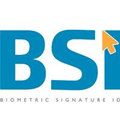The Twelve Scams of Christmas,” or Popular Online Attacks This Holiday Season Pt II of IV
Robert Siciliano identity theft expert
Cybercriminals Take Advantage of the Holiday Season, Aiming to Steal Consumers’ Money, Identities and Financial Information
As cybercriminals begin to take advantage of the holiday season, McAfee, Inc. revealed the “Twelve Scams of Christmas” – the twelve most dangerous online scams that computer users should be cautious of this holiday season. According to Consumer Reports’ 2009 State of the Net Survey, cybercriminals have bilked $8 billion from consumers in the past two years, and McAfee warns consumers not to fall victim to the top scams this year.
Being that I’m on McAfee’s Consumer Advisory Board, I’m advising you to adhere to the following:
Previous first 3 of Twelve Scams of Christmas here. McAfee’s 3 more of Twelve Scams of Christmas below.
Scam IV: The Dangers of Holiday E-Cards
Cyber thieves cash in on consumers who send holiday e-cards in an effort to be environmentally conscious. Last holiday season, McAfee Labs discovered a worm masked as Hallmark e-cards and McDonald’s and Coca-Cola holiday promotions. Holiday-themed PowerPoint e-mail attachments are also popular among cybercriminals. Be careful what you click on.
Scam V: “Luxury” Holiday Jewelry Comes at a High Price
McAfee Labs recently uncovered a new holiday campaign that leads shoppers to malware-ridden sites offering “discounted” luxury gifts from Cartier, Gucci, and Tag Heuer. Cybercriminals even use fraudulent logos of the Better Business Bureau to trick shoppers into buying products they never receive.
Scam VI: Practice Safe Holiday Shopping – Online Identity Theft on the Rise
Forrester Research Inc. predicts online holiday sales will increase this year, as more bargain hunters turn to the Web for deals. While users shop and surf on open hotspots, hackers can spy on their activity in an attempt to steal their personal information. McAfee tells users never to shop online from a public computer or on an open Wi-Fi network.
Stay tuned to parts III & IV.
Get a credit freeze. Go online now and search “credit freeze” or “security freeze” and go to consumersunion.org and follow the steps for the state you live in. This is an absolutely necessary tool to secure your credit. In most cases it prevents new accounts from being opened in your name. This makes the SSN useless to the thief.
Invest in Intelius Identity Theft Protection and Protection. While not all forms of identity theft can be prevented, you can effectively manage your personal identifying information by knowing what’s buzzing out there in regards to YOU.
Robert Siciliano, identity theft speaker, discusses Black Friday and Cyber Monday on FOX Boston



























